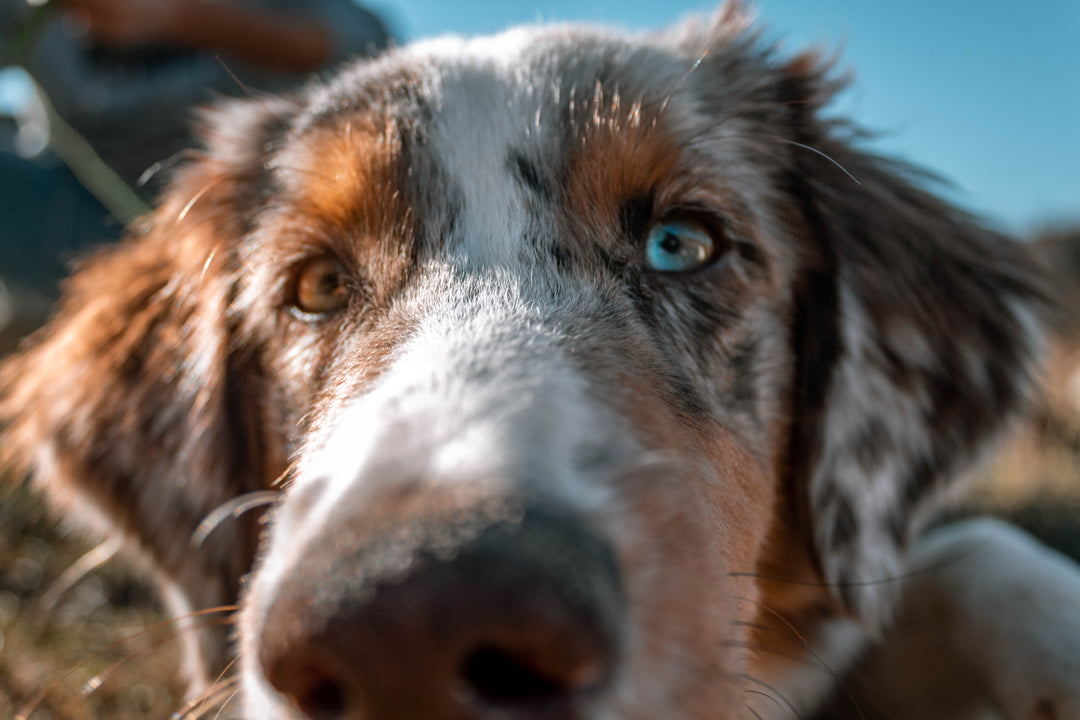Dogs can be used to sniff samples and tries to find cancer from them. Dogs are superior in finding cancer when compared to machines.
The hunger for freeze-dried dog treats as a requirement
The main task for a cancer dog is indicating the cancer sample. Dogs do not work at laboratories or hospitals, but in their own associations which in turn cooperate with different researchers.
Smell detection dogs must always pass a double-blind test. Anna Hielm-Björkman, assistant professor of veterinary medicine at the University of Helsinki, and Jouko Vepsäläinen, professor of chemistry at the University of Eastern Finland, are responsible for the smell detection training.
Smell detection is a natural skill for a dog. The only requirement besides the tendency to smell things is the need for treats. A suitable dog will learn to recognize a cancer sample in a few weeks. Dogs of all races can learn smell detection.
Volunteers can also bring a sample
There are 12 dogs in the Wise nose of Viikki, Helsinki, some of which are still in training. Urine samples from volunteers are used in training.
If the dog suddenly indicates a volunteer's sample, it will be noted to the sample giver. After that, it is the volunteer’s responsibility to seek medical help.
– Surprising results have to be confirmed in further tests. Dogs also do not recognize the type of cancer.
Smell detection is a natural skill for a dog.
What does dog smell in cancer?
At the moment the most interesting question is what dogs really smell when they indicate a cancer sample. It is not yet known what makes dogs react to cancer. Instead, Jouko Vepsäläinen, professor of chemistry, does not doubt the certainty of the results.
– In practice, a well-trained dog has a near 100% chance of recognizing a cancer sample.
Vepsäläinen’s research at the University of Eastern Finland looks for a cancer odor molecule or molecular mixture. The source of the odor is searched by diluting the concentration of the test sample.
It was found in research that a few dozen odor molecules are sufficient for a dog, whereas instrumental methods require up to a million times more. If you compare a dog’s sense of smell to laboratory equipment, it is easy to declare a winner.
– Instrumental methods require a truckload of sand particles, but an untrained dog needs only a coffee cup worth. For a trained dog, it is enough to have a few specks of sand on a teaspoon.
Superiority also causes problems. In order to verify the odor perception of dogs, the technology needs to evolve. Currently, the sensitivity of research equipment is not even close to the dog's sense of smell.
If and when the cancer marker molecule was found, it would mean an improvement in the patients' quality of life, according to Vepsäläinen. Severe cancer treatments could be stopped early enough to be sure that the cancer was gone.
The participation of dogs in medical research has required the elimination of prejudice. Machines and equipment are not always the best, but sometimes a chicken gizzard loving pet will win with precision.
The leading urologist of HUS’s Deducer prostate cancer research, Antti Rannikko, thinks that the inclusion of dogs to cancer research is an interesting addition.
Mostly individualized treatments are made for cancer patients, and it is especially important for people with prostate cancer because of the two types of cancer: lethal and harmless. Nowadays the separation of these types is not accurate enough. This causes a risk of under- and overtreatment for the patients.
What is happening inside a dog’s nose?
Dogs’ noses are usually cold and clammy, but why is their sense of smell so good? First of all, it's about how the nose is formed and secondly the sense of smell is the most important sense to dogs. When people have 5 million smell receptors in their noses dogs have at least 200 million.
What’s going on inside a dog’s nose?
In addition to a normal nose, dogs have another, a vomeronasal organ, which is situated between the nose and soft palate.
When a dog is sniffing another dog’s behind or the urine of a female in heat, it usually takes a lick. The dog transfers the smell sample behind the soft palate using the tongue. This is how a dog uses their vomeronasal nose that is linked to hormones and sexuality.
Often you can see the upper lip and the whole nose moving when a dog or a horse is sniffing. According to Hielm Björkman, a dog can “see” three-dimensionally with its nostrils.
– One nostril tries to find out where the smell came from, while the other figures out what kind of a lady walked by an hour ago and what has she been eating.
Other animals are also used in sniffing
Dogs are not the only animals with exceptional skills. According to Hielm-Björkman African opossums are used in a few African countries to recognize tuberculosis. To train a bee to smell cancer takes only a dozen hours.
Bees and wasps with small sensors can be used as minesweepers in minefields. When a dog is risking its life finding explosives a bee can fly above it. A pig also has a very good sense of smell, says Hielm-Björkman.
– The advantage of a dog compared to other animals is that it is so easy to communicate with it. A dog also likes to please people.

